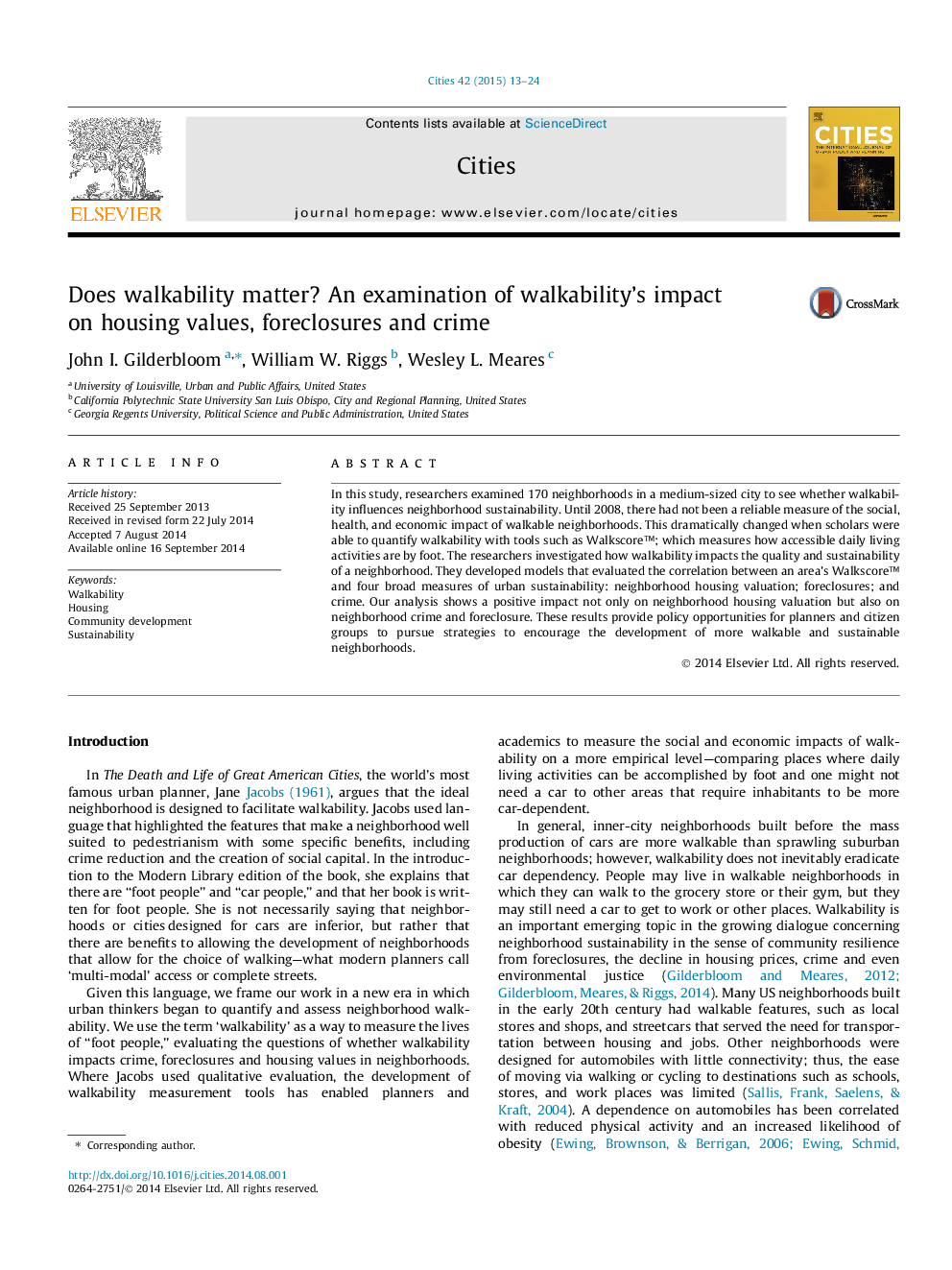| Article ID | Journal | Published Year | Pages | File Type |
|---|---|---|---|---|
| 1008334 | Cities | 2015 | 12 Pages |
•Examines the relationship between walkability and sustainability in a medium-sized city.•Walkability results in higher neighborhood housing values.•Walkability also reduces neighborhood abandonment and crime.•Suggests additional research which might show walkability means longer lifespan.•Offers policy opportunities to facilitate the development of more walkable communities.
In this study, researchers examined 170 neighborhoods in a medium-sized city to see whether walkability influences neighborhood sustainability. Until 2008, there had not been a reliable measure of the social, health, and economic impact of walkable neighborhoods. This dramatically changed when scholars were able to quantify walkability with tools such as Walkscore™; which measures how accessible daily living activities are by foot. The researchers investigated how walkability impacts the quality and sustainability of a neighborhood. They developed models that evaluated the correlation between an area’s Walkscore™ and four broad measures of urban sustainability: neighborhood housing valuation; foreclosures; and crime. Our analysis shows a positive impact not only on neighborhood housing valuation but also on neighborhood crime and foreclosure. These results provide policy opportunities for planners and citizen groups to pursue strategies to encourage the development of more walkable and sustainable neighborhoods.
